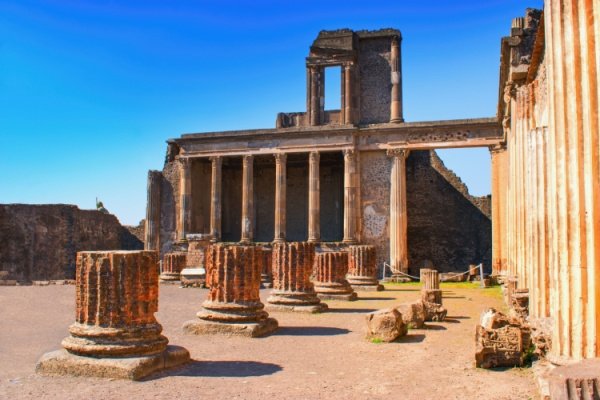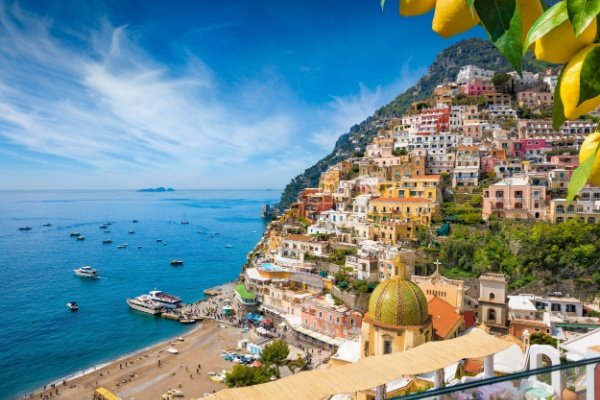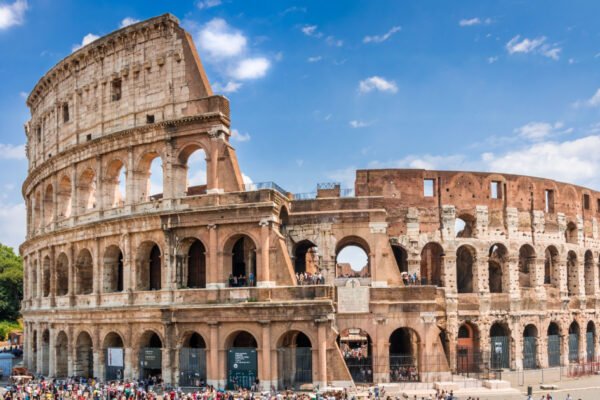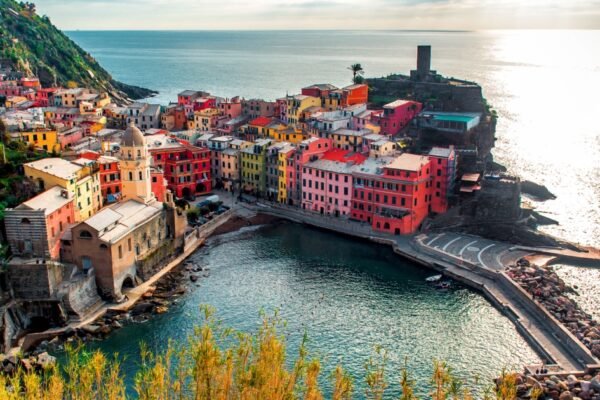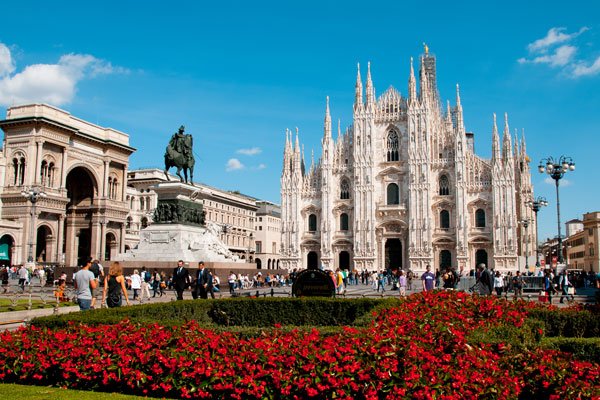History of Pompeii: Eruption Day & Aftermath
History of Pompeii: Eruption Day & Aftermath
Explore the tumultuous history of Pompeii on this page, where we present a chronological timeline and provide an in-depth overview. Explore what happened in Pompeii, with a detailed examination of the eruption day and its aftermath, offering insights from the perspective of an eyewitness.
What Happened in Pompeii?
Pompeii was an ancient city in Campania, at the foot of Mount Vesuvius, north of the River Sarno just before its mouth in the Gulf of Naples.
It was buried during the eruption of Mount Vesuvius in the year 79, but was largely preserved under the volcanic ash. In its approximately 700- year history, Pompeii was inhabited and shaped by Oscans, Samnites, Greeks, Etruscans and Romans, but was forgotten over time after it was buried.
With its rediscovery in the 18th century, the second history of the city began, during which Pompeii became a central object of archeology and research into the ancient world. The approximately 163 acres excavated urban area is now the largest contiguous ancient city ruins in the world. Pompeii has been on the UNESCO World Heritage List since 1997.
Pompeii History: Chronological Timeline
Pre-Roman Period (8th – 1st centuries B.C.)
8th-7th centuries B.C.: Oscan people, likely from the Italian peninsula, establish the first settlements in the area.
6th century B.C.: Greeks influence the growing town, introducing their language and culture.
4th-3rd centuries B.C.: Samnites, another Italic people, take control of Pompeii and the surrounding region.
Roman Period (1st century BC – 79 A.D.)
80 B.C.: General Sulla conquers Pompeii after a rebellion and establishes a Roman colony, renaming it “Colonia Cornelia Veneria Pompeii.”
75 B.C.: Amphitheater construction begins, marking the growing importance of public entertainment in Pompeii.
59 A.D.: A violent riot erupts in the amphitheater, leading to a ten-year ban on gladiatorial games.
February 5, 62 A.D.: A massive earthquake damages Pompeii and surrounding towns, requiring significant reconstruction efforts.
August 24, 79 A.D.: Mount Vesuvius erupts, burying Pompeii and other settlements under ash and volcanic debris, preserving the city in a snapshot of time.
Post-eruption (79 A.D. – Present)
16th century: Accidental rediscovery of Pompeii by architect Domenico Fontana.
1748: Systematic excavations begin, revealing the city’s streets, houses, and public areas.
19th-21st centuries: Ongoing excavations continue to uncover new areas and provide further insights into daily life in the Roman city.
An in-depth Overview of the History of Pompeii
Pompeii’s history unfolds across distinct periods, commencing with the pre-Roman era where Oscan settlers established the initial foundations in the 8th-7th centuries B.C. Subsequent Greek influence during the 6th century B.C. introduced cultural facets and linguistic elements, shaping the burgeoning town. By the 4th-3rd centuries B.C., the Samnites, an Italic people, assumed control of Pompeii and its vicinity.
Transitioning into the Roman period, the year 80 B.C. witnessed the conquest of Pompeii by General Sulla following a rebellion, leading to its transformation into the Roman colony “Colonia Cornelia Veneria Pompeii.” The cultural significance of public entertainment surged with the initiation of amphitheater construction in 75 B.C. However, a tumultuous event unfolded in 59 A.D. when a violent riot erupted in the amphitheater, prompting a decade-long ban on gladiatorial games.
The seismic event on February 5, 62 A.D., rocked Pompeii with a massive earthquake, causing extensive damage and necessitating substantial reconstruction efforts. Tragically, the city’s fate reached a critical juncture on August 24, 79 A.D., as Mount Vesuvius erupted violently, blanketing Pompeii in ash and volcanic debris. This cataclysmic event, while devastating, paradoxically preserved the city as a poignant snapshot of its final moments.
In the post-eruption era, Pompeii experienced a resurgence in the 16th century, when architect Domenico Fontana accidentally rediscovered the ancient city. Systematic excavations commenced in 1748, unveiling the intricate network of streets, houses, and public spaces. The subsequent centuries witnessed ongoing excavations that persistently unveil new facets, offering profound insights into the daily life of this Roman city.
The Eruption Day and the Aftermath: The Catastrophe from the Perspective of an Eyewitness
Pliny the Younger, a prominent Roman author and magistrate, played a crucial role as an eyewitness to the catastrophic eruption of Mount Vesuvius in 79 AD. His detailed letters to the historian Tacitus recount the events, offering invaluable insights into one of the most infamous natural disasters in history.
Pompeii Tickets
Discover our carefully selected Pompeii tickets, guided tours, and day trips below:
Bestseller Pompeii Entrance Ticket
Pompeii Express: Reserved Entrance With Optional Audio Guide
Explore Pompeii at your own pace with a Reserved Pompeii ticket. Elevate your experience by opting for an enriching audio guide, providing essential information about the ancient city.
“Pleasant, clear information with smooth operation. We received a free map with the main attractions and advice on the route. The audio guide was perfect.“
Figo, Sep 2024 [Source: Tiqets]
Top Selling Pompeii Guided Tours
Pompeii Skip-the-Line Guided Tour
See the marvels of the archaeological site of Pompeii on a comprehensive 2 or 3-hour guided tour with a knowledgeable guide. Select a guide fluent in English, German, Japanese, Spanish, French, or Portuguese, and delve into insights about the early Romans’ lifestyle.
“The explanation in the emails of how to get to the meeting point was very easy and detailed. The guided tour started at the agreed time and the guide’s explanations were clear and interesting. Highly recommended. You are left wanting more tour but Pompeii is very big and in just one visit you can’t see everything.” Jorge – Jan, 2024 [Source: Headout]
Pompeii: Entry Ticket and Guided Tour with an Archaeologist
Join a 2-hour walking tour of Pompeii with a local archaeologist, featuring a Pompeii ticket with skip-the-line access. Explore top landmarks such as the Casa del Fauno, the Temple of Jupiter, the Basilica, the Forum, and ancient baths in the company of a small group.
“Judas accompanied us inside Pompeii with a determined awareness of the topics covered, not sparing himself with anecdotes and details. Her friendliness was the added value as was her sensitivity in dealing with certain topics even for children. 🔝”* GetYourGuide traveler – Italy; Jan, 2024 [Source: GetYourGuide]
Most Popular Pompeii Day Trips
From Naples: Pompeii Ruins & Mount Vesuvius Day Tour
Embark on a Pompeii Ruins & Mount Vesuvius Day Tour from Naples, guided by a live guide or audio guide based on your chosen option. This 7-hour adventure includes a Pompeii Ticket, entry to Vesuvius, pizza lunch, and convenient pickup and drop-off.
“Fantastic day! Met our tour guide promptly outside the Hotel and the day started with climbing Mount Vesuvius, beautiful clear day! We then headed to Pompeii and had a lovely lunch which included pizza! Afterwards we then went to see the Ruins with our own audio headset. Our tour guide was very friendly, would highly recommend!” GetYourGuide traveler – United Kingdom; Jan, 2024 [Source: GetYourGuide]
From Rome: Pompeii, Amalfi Coast and Positano Day Trip
Join in a 13-hour Pompeii, Amalfi Coast, and Positano Day Trip departing from Rome, exploring three of Italy’s most famous destinations. Travel comfortably on an air-conditioned minibus, gain insights from your local expert guide, and enjoy the convenience of the included Skip-the-Line Pompeii ticket.
“Long trip but we’ll worth it, best excursion we booked during our two week trip so far. Downside is the time on the coach but Pompeii is absolutely fantastic, very educational. The two guides on the day were both approved by all, not a bad word to say about either. Personally we had Enzo and he was superb.[…] 5 stars all round thankyo” Greg – Germany; Jan, 2024 [Source: GetYourGuide]
From Naples or Sorrento: Pompei Half-Day Tour
Embark on a half-day guided excursion from Sorrento or Naples to explore the ruins of ancient Pompeii in an air-conditioned vehicle. Admire one of the world’s most famous archaeological sites with skip-the-line Pompeii tickets.
“The staff was punctual and professional, the guide was excellent, kind and very clear in his explanations, my family and I were very satisfied, I will return with you again, there is still a lot to see in Pompeii. Thank you.” Nicolè – Italy; Dec, 2023 [Source: GetYourGuide]



